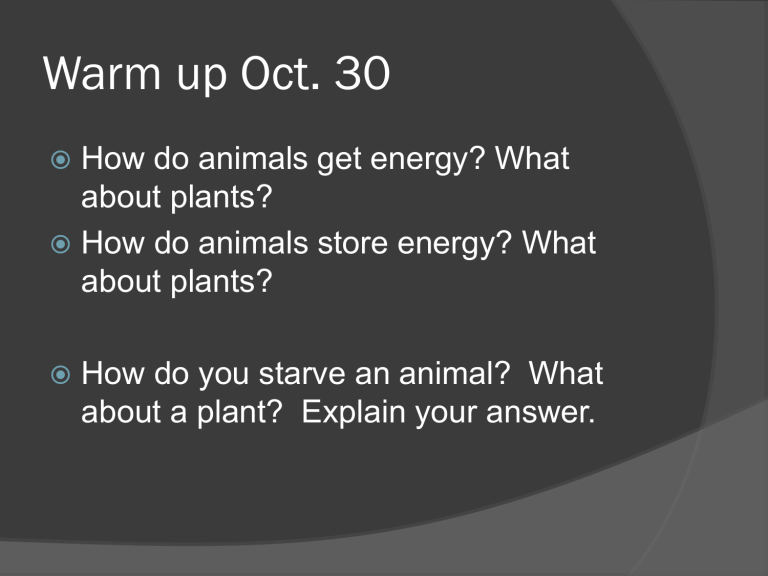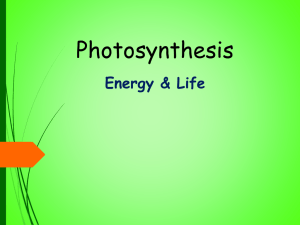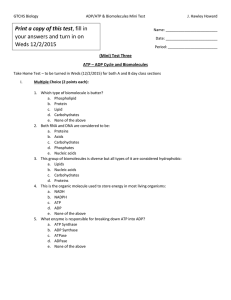ATP & Chemical Energy

Warm up Oct. 30
How do animals get energy? What about plants?
How do animals store energy? What about plants?
How do you starve an animal? What about a plant? Explain your answer.
What to do?
Write words in white
Yellow words mean you need to do something!
Cellular Energy
Cells must convert food into a form of energy they can use.
They cannot cash in carbohydrates for energy.
Analogy: You cannot use money stored in the bank. You first need to turn it into cash.
Cellular Energy, continued
Cells convert carbohydrates into
ATP
○ ATP(adenosine triphosphate): molecule used to carry chemical energy
○ Carries energy in its bonds
ATP vs. ADP
adenosine
Make a double bubble in your notes comparing the structures of ATP and ADP
2 similarities and 1 difference
Which carries more energy? Why?
adenosine
ADP triphosphate
ATP diphosphate
How does ATP Release Energy?
Energy is released when a phosphate group is removed.
ADP (2p) is changed into ATP (3p) when a phosphate group is added.
How does ADP become ATP?
Carbohydrates and other foods consumed by the body contain energy.
When they are broken down, energy is released and is used to reattach the phosphate molecule to the ADP, turning it back into ATP.
How is ATP like a rechargeable battery?
How do Organisms get their
Food?
1. Autotrophs: make their own food using inorganic compound a) Phototrophs: use the sunlight b) Chemotrophs: use chemicals
2. Heterotrophs : eat other organisms for food
Photosynthesis
Plants also need ATP
They do not directly use organic molecules (ex. Carbohydrates)
They use energy produced from photosynthesis (make sugars from sunlight)
All cells break down macromolecules for energy
Both Heterotrophs and Autotrophs contain energy in the form of organic molecules.
To get energy all organisms must convert food into a form of energy they can use.
Even plants need to eat. The only difference is that they make their own food.






